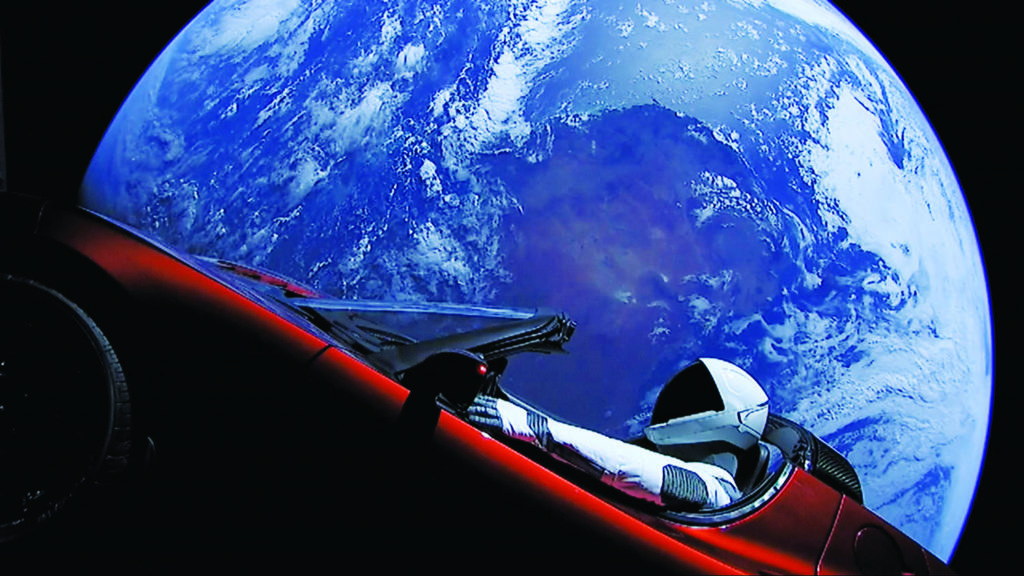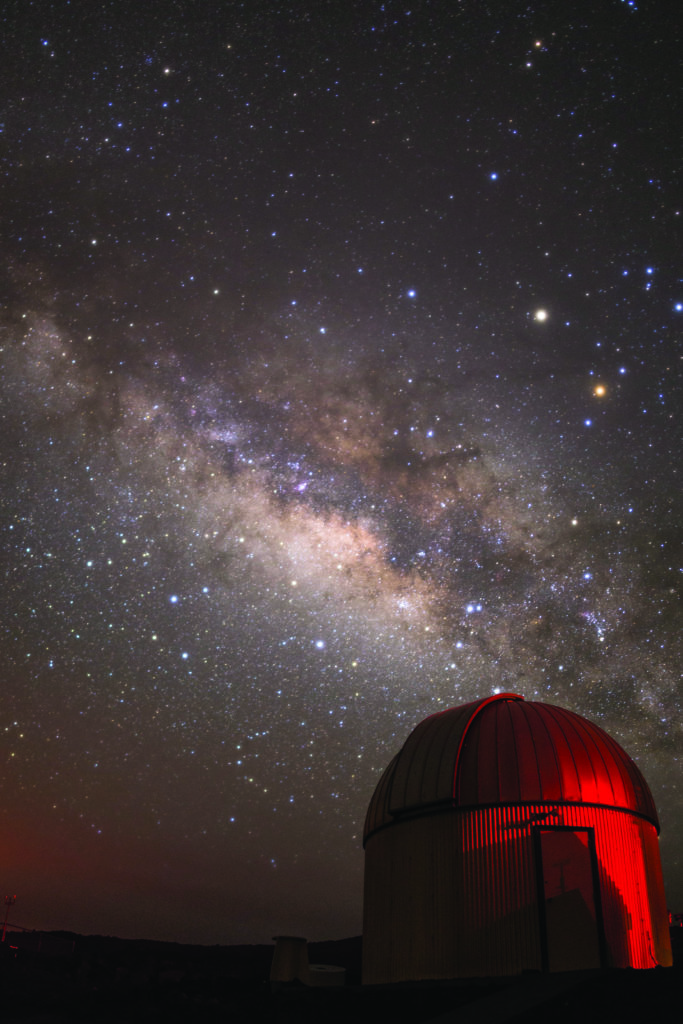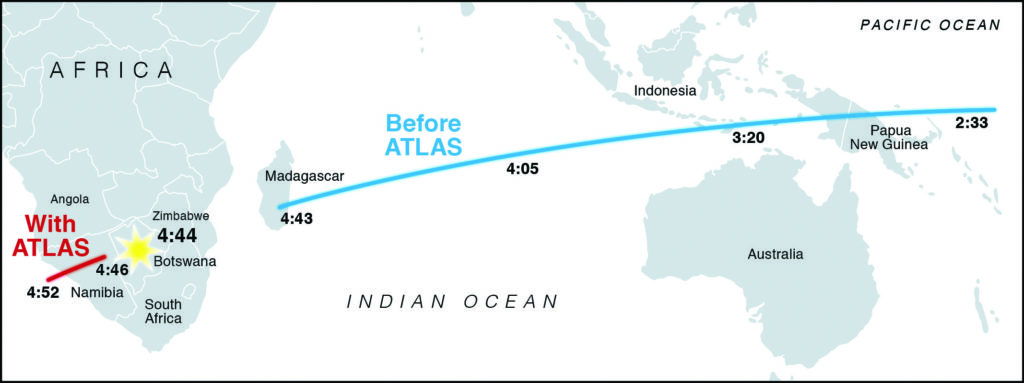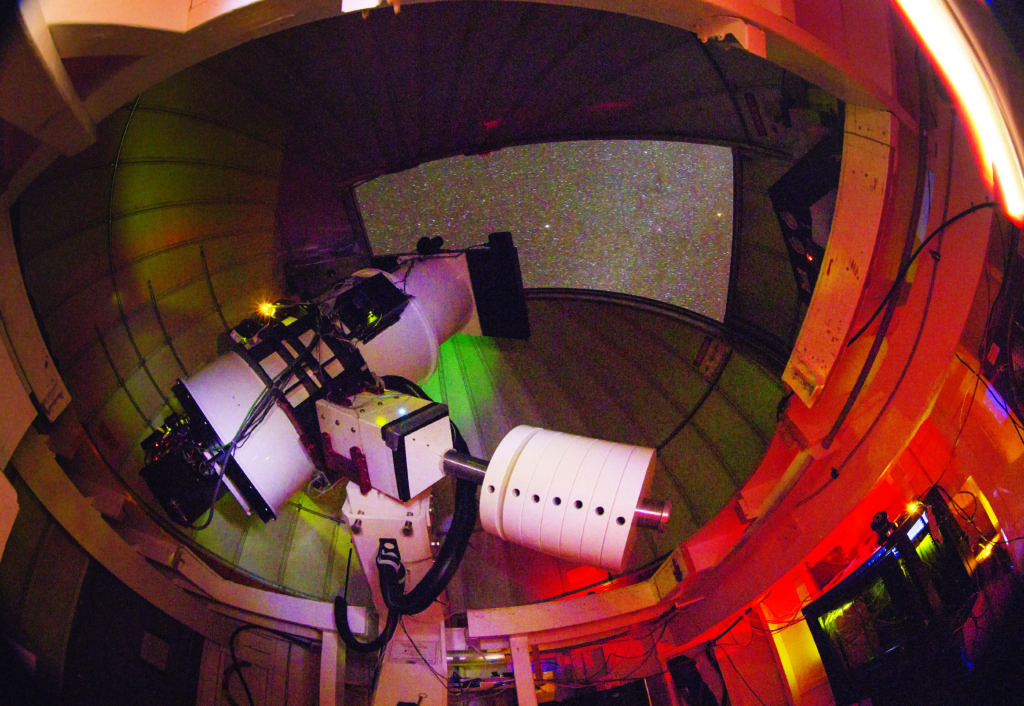Why Spotting the SpaceX Tesla Roadster Was Important to Earth’s Safety

When Elon Musk’s Tesla Roadster lifted off from the Kennedy Space Center aboard his SpaceX Falcon Heavy rocket in February 2018, it served two distinct purposes. One was to test the capabilities of the Falcon Heavy, billed as the world’s most powerful rocket, which may soon help the U.S. get back into the business of reliably delivering payloads into space. Second, it served as possibly the greatest free car commercial ever for the Tesla car brand by its visionary founder.
A third outcome, which arguably may be the most important, came when images of the Tesla Roadster was captured by the University of Hawai‘i’s ATLAS (Asteroid Terrestrial-impact Last Alert System) telescope at a distance of 500,000 miles as it moved away from Earth at a speed of about 8,000 miles per hour on its journey to a planned heliocentric orbit around Mars.
“We were lucky to catch the Roadster before sunrise during our regular observing,” said Larry Denneau, principal investigator for the ATLAS project. “Although the object was moving away instead of toward us, this really demonstrated the power of our system to find small asteroids that could hit Earth, and accurately measure their orbits to see if they’re dangerous.”

Photo: Henry Weiland
There are several efforts devoted to searching for asteroids and calculating whether their orbits present a threat to humans. Most of these, including the University of Hawai‘i’s Pan-STARRS (Panoramic Survey Telescope and Rapid Response System) located near the summit of Haleakalā on the island of Maui, are best at finding relatively large asteroids while they are still a great distance from the Earth. It is estimated that Pan-STARRS has found more than 90 percent of the largest, most dangerous asteroids known as “dinosaur killers,” with none posing a current threat to the Earth.
The ATLAS project, developed and operated by the Institute for Astronomy (IfA) at the University of Hawai‘i at Mānoa (UH Mānoa) takes a different approach. Funded by a $5 million National Aeronautics and Space Administration (NASA) grant in 2013, ATLAS is optimized to find objects which are smaller than those likely to be found by Pan-STARRS, but which may hit the Earth within a matter of days. It consists of two telescopes, 100 miles apart, near the summit of Mauna Loa on Hawai‘i Island and on Haleakalā.
“Currently we do not have the capability to destroy or deflect a large asteroid heading towards us,” said UH Astronomer John Tonry, who also serves as ATLAS project lead. “But if we can accurately predict when and where it is going to hit us, we can prepare ourselves and maybe evacuate the imperiled area.”
To do so, ATLAS employs a very powerful 110 megapixel camera that is combined with a comparatively small 50 cm f/2 Wright-Schmidt telescope that has a large 7.4 degree field of view equivalent to 15 times the diameter of a full moon—which allows for two full scans of the visible Hawai‘i sky each night. ATLAS first divides the sky into 1500 patches, then takes four 30-second exposures of each patch about 10 minutes apart. A computer then analyzes the image quartet looking for objects whose positions have changed during that time, tries to match each discovery with a list of known asteroids and comets, and eliminates those with orbits are known to be harmless. The ATLAS system then presents a list of possibly dangerous moving objects as they are detected. After assessing the reliability of each discovery, the data is sent to the Minor Planet Center at the Smithsonian Astrophysical Observatory in Cambridge, Massachusetts, to coordinate with observatories around the world to make immediate follow-up measurements needed to refine the prediction of the asteroid’s path. If an asteroid’s orbit is determined to be dangerous, usually a few hours later, further assessments are done by NASA and additional warnings may propagate to the International Asteroid Warning Network (IAWN), who can then coordinate with area civil defense.
Tonry, a National Academy of Science member and an internationally recognized expert in developing technologies to survey the sky and find moving and variable objects, such as exploding and asteroids—played a key role in both the development of ATLAS and Pan-STARRS. He compared ATLAS’ sensitivity to detecting a match flame in New York City when viewed from San Francisco.
“Our team predicts that the ATLAS system will offer a one-week warning for a 50-yard diameter “city killer” asteroid and three weeks warning for a 150-yard diameter “county killer,” added Tonry. “That’s enough time to evacuate the area, take measure to protect buildings and other infrastructure—and to prepare for tsunamis generated by ocean impacts.”
In June 2018, ATLAS passed another test as it detected a 3-meter asteroid several hours before impact over Botswana. Prior to the ATLAS measurement, impact predictions had the asteroid hitting Earth anywhere from Madagascar to the South Pacific—a range of over one-half the southern hemisphere. Similar to the spotting of the Tesla Roadster, ATLAS was not specifically looking for the asteroid, but it was found during its automatic scanning of the sky.

While the twin ATLAS telescopes are capable of observing the entire night sky every two nights, this interval can still allow a small, yet dangerous asteroid to sneak past when ATLAS is not looking. To increase its sky coverage, the ATLAS project is building two more identical telescopes in South Africa and Chile to complement the northern pair. These additional telescopes will not only be able to observe the far southern sky that the telescopes in Hawai‘i cannot see, they will also be able to observe when it is daytime in Hawai‘i, decreasing the chance that an incoming asteroid can escape detection. More information about the UH ATLAS project can be found at https://fallingstar.com.

